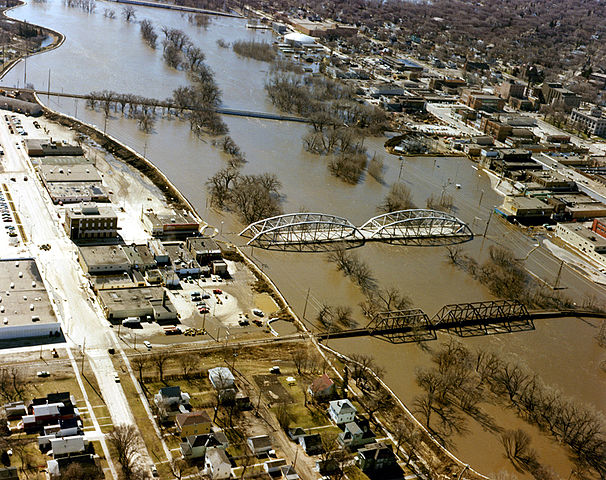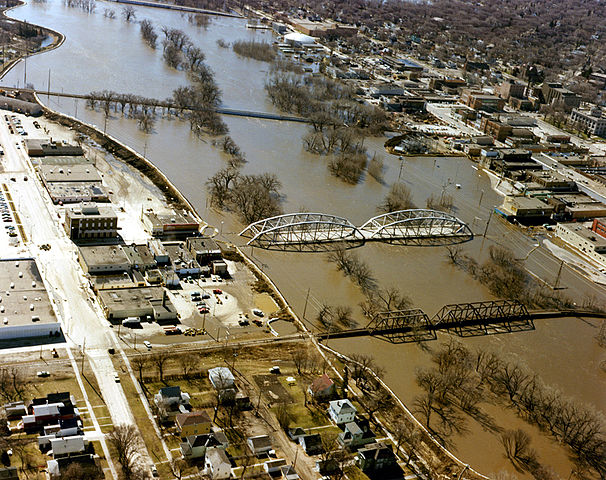The Public Banking Institute blog cites a powerful example of how a public bank can help a city bounce back from a devastating natural disaster. As Hurricane Sandy recovery efforts unfold, there's a lesson from history about the role of strong local financial institutions in increasing urban resilience.
In April of 1997, Grand Forks, North Dakota, was hit by record flooding and major fires that put the city's future in jeopardy. One of the first economic responders was the Bank of North Dakota (BND), currently the only public bank in the U.S.
What's a public bank, you ask? Public banks are owned by citizens through their government. They have a public interest mission, are dedicated to funding local development, and plow profits back into the state treasury to fund social programs and cover deficits. Rather than competing with private banks, BND partners with them to meet the needs of North Dakotans. BND is one reason North Dakota has low unemployment and runs budget surpluses while most states are deeply in the red.
As a public bank, BND was able to respond to the '97 flood in ways that a privately owned bank could not or, perhaps, would not. While Sandy's wrath cost dozens of lives and an estimated $60 billion, Grand Forks' suffered $3.5 billion in losses — a lot of damage for a town of 50,000, which saw flood waters inundate a staggering 75% of area homes. Fortunately, no one died.

The Red River ravaging Grand Forks, North Dakota. Photo credit: U.S. Army Corps of Engineers Digital Visual Library. Used under Creative Commons license.
Right after the flood, the Bank of North Dakota got to work, established a disaster relief loan fund, set aside $5 million to assist flood victims, and set up additional credit lines of around $70 million:
- $15 million for the ND Division of Emergency Management
- $10 million for the ND National Guard
- $25 million for the City of Grand Forks
- $12 million for the University of North Dakota, located in Grand Forks
- $7 million allocated to raise the height of a dike at Devil's Lake, about 90 miles west of Grand Forks
Other financial institutions hurried to catch up and match the offer, as BND worked with the Department of Education, the Federal Housing Administration, the Veterans Administration, and other federal and state agencies to provide student and home loan relief to flood victims. Due to quick recovery efforts, Grand Forks lost only 3% of its population during recovery while similarly devastated East Grand Forks, across the river in Minnesota, a state without a public bank, lost 17%.
That's what is possible with a public bank: people come first. But it's not all altruism. As a local financial institution, The Bank of North Dakota's future was partly tied to a healthy recovery.
I wish New York and New Jersey speedy recoveries. If you live there, I encourage you to start or get behind a public bank initiative to shore up local resilience. Twenty states, including New York, have initiatives underway to create public banks. The Public Banking Institute has a guide to local initiatives here.
In the mean time, here's ten ways you can help the recovery effort.









